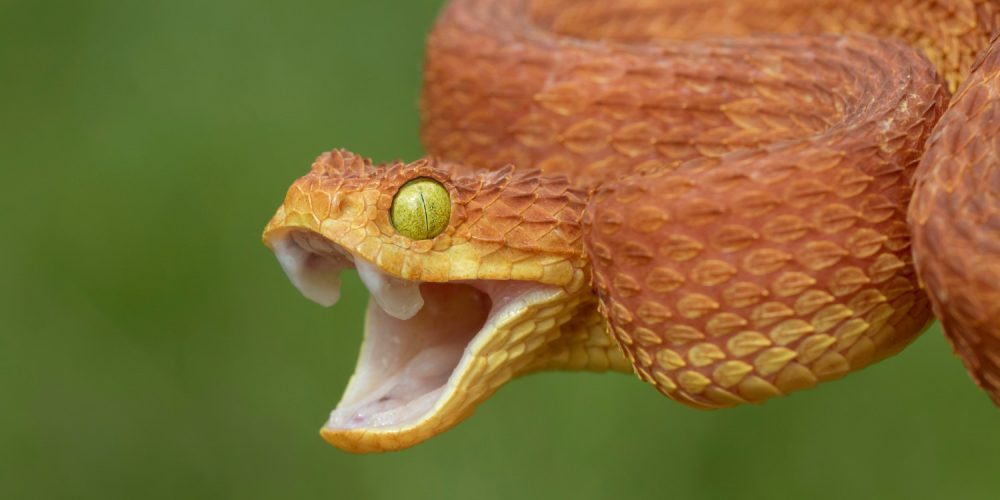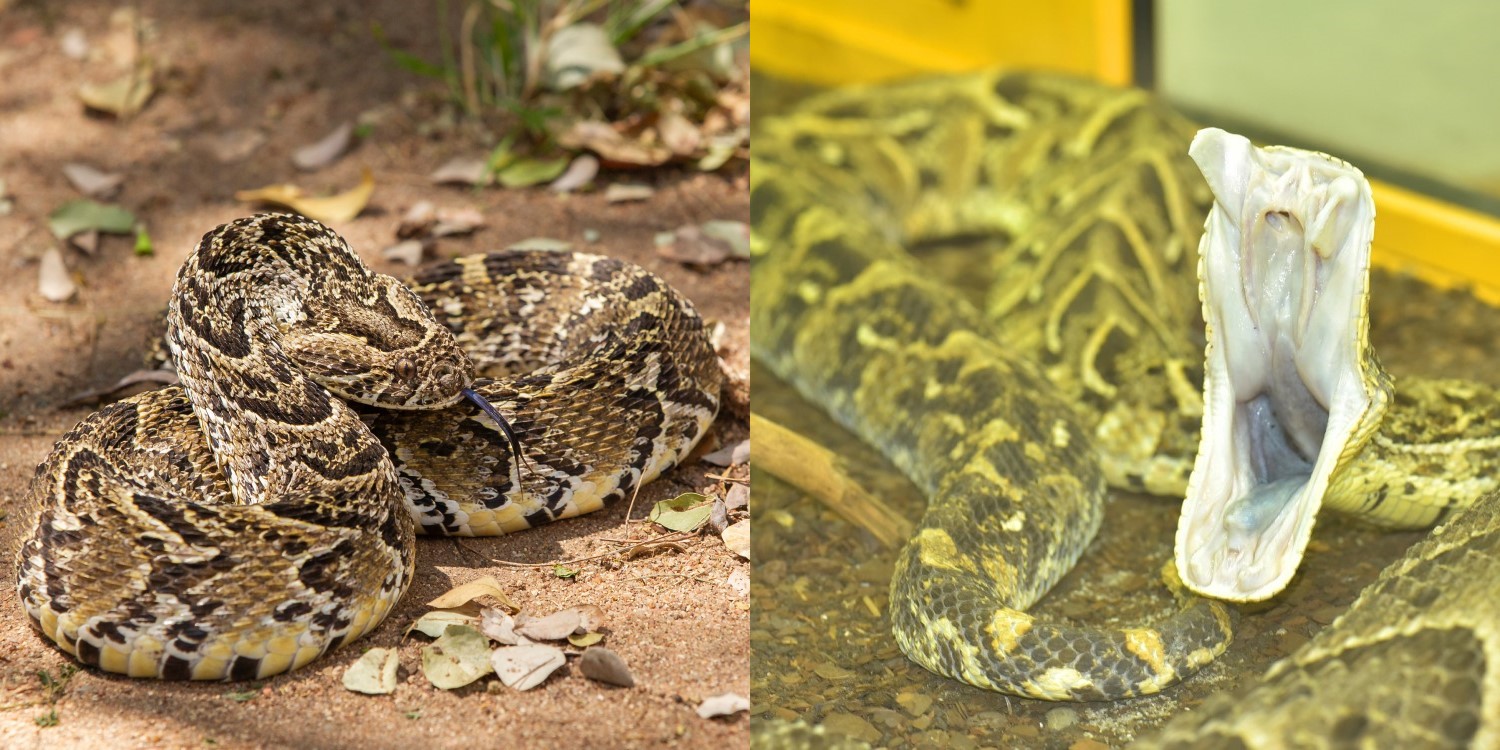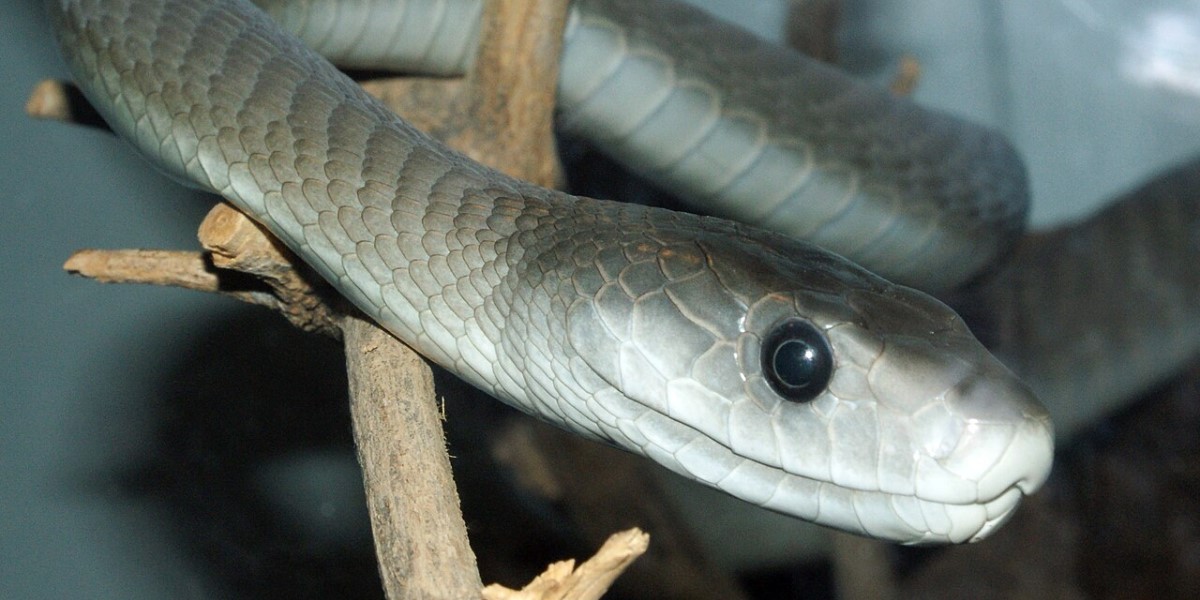
Africa is a continent rich in biodiversity, with a wide range of habitats and ecosystems. Among its many animals, snakes are one of the most diverse and fascinating groups, with about 170 species found across the region. Some of these snakes are harmless, some are mildly venomous, and some are highly dangerous, capable of delivering fatal bites to humans and other animals.
In this blog post, we will explore some of the most common and notorious snakes of Africa, especially the dangerous species that pose a threat to people and livestock. We will also learn about their distribution, behavior, identification, and conservation status.

The puff adder is one of the most widespread and venomous snakes in Africa, occurring in almost every country except for the Sahara Desert and rainforest regions. It is also found in parts of the Arabian Peninsula and southwestern Asia. The puff adder is a thick-bodied snake that can grow up to 1 meter (3 feet) long, with a triangular head and a distinctive pattern of dark chevrons on a light background. The coloration varies depending on the habitat, ranging from yellow, brown, reddish, to black.
The puff adder is an ambush predator that lies in wait for its prey, which includes rodents, birds, lizards, frogs, and sometimes other snakes. It has long fangs that can inject large amounts of cytotoxic venom, which causes tissue damage and necrosis. The puff adder is responsible for more snakebite fatalities in Africa than any other snake, as it often bites without warning when disturbed or stepped on. The symptoms of a puff adder bite include severe pain, swelling, blistering, bleeding, and infection. Antivenom is available and should be administered as soon as possible.
The puff adder is not endangered, but it faces threats from habitat loss, persecution by humans, and predation by mongooses, honey badgers, and birds of prey.
 Black mamba – (Dendroaspis polylepis) (TimVickers)
Black mamba – (Dendroaspis polylepis) (TimVickers)
The black mamba is one of the most feared and respected snakes in Africa, and for good reason. It is the longest venomous snake in Africa, reaching up to 4.5 meters (14 feet) long, and one of the fastest snakes in the world, capable of moving at speeds of up to 20 km/h (12 mph). It is not actually black, but rather dark olive or brown in color, with a pale belly. The name comes from the black color of the inside of its mouth, which it displays when threatened.
The black mamba is a highly agile and aggressive snake that prefers open habitats such as savannas, woodlands, and rocky areas. It feeds mainly on small mammals and birds, which it kills with its potent neurotoxic venom that affects the nervous system. A single bite from a black mamba can deliver enough venom to kill 10-25 adult humans or an elephant. The symptoms of a black mamba bite include rapid onset of drowsiness, difficulty breathing, paralysis, convulsions, and cardiac arrest. Without antivenom and medical attention, death can occur within 20 minutes to 3 hours.
The black mamba is not endangered, but it faces threats from habitat loss, human encroachment, and poaching for its skin and venom.
The Cape cobra is one of the most venomous cobras in Africa, found mainly in South Africa and Namibia. It is also known as the yellow cobra or the copper cobra because of its variable coloration that ranges from yellow to brown to black. It has a slender body that can grow up to 1.8 meters (6 feet) long,
and a hood that it expands when threatened.
The Cape cobra is an active hunter that preys on rodents, birds, lizards, and especially other snakes, including venomous ones such as puff adders and boomslangs. It has short fangs that can inject neurotoxic venom, which affects the nervous system and causes respiratory failure. The Cape cobra is also capable of spitting its venom up to 3 meters (10 feet) away, aiming for the eyes of its enemies. The symptoms of a Cape cobra bite include blurred vision, dizziness, nausea, difficulty swallowing, and paralysis. Antivenom is available and should be administered as soon as possible.
The Cape cobra is not endangered, but it faces threats from habitat loss, roadkill, and persecution by humans.
The Gaboon viper is the largest viper in Africa and one of the heaviest venomous snakes in the world, weighing up to 16 kg (35 lbs) and reaching up to 2 meters (6.5 feet) long. It has a massive head and a distinctive pattern of brown, black, and pink markings that camouflage it in the leaf litter of the rainforest floor. It also has the longest fangs of any snake, measuring up to 5 cm (2 inches) long.
The Gaboon viper is a slow-moving and secretive snake that relies on its camouflage and ambush strategy to catch its prey, which includes rodents, birds, and small antelopes. It has a large venom gland that can deliver up to 450 mg of venom per bite, which is enough to kill several humans. The venom is mainly cytotoxic, causing tissue damage and necrosis, but also has some hemotoxic and neurotoxic components, causing bleeding and nervous system impairment. The symptoms of a Gaboon viper bite include severe pain, swelling, bruising, blistering, bleeding, shock, and organ failure. Antivenom is available and should be administered as soon as possible.
The Gaboon viper is not endangered, but it faces threats from habitat loss, deforestation, and bushmeat hunting.
There are many other snakes in Africa that can pose a danger to humans and animals, such as the Egyptian cobra, the carpet viper, the boomslang, the green mamba, the rinkhals, and the spitting cobras. These snakes have different venom types, distribution, behavior, and conservation status, but they all share some common features:
they are highly adapted to their environments, they play important roles in their ecosystems, and they deserve respect and protection.
Snakes are often misunderstood and feared by many people, but they are not evil or malicious creatures. They only bite when they feel threatened or provoked, and they usually try to avoid confrontation with humans. By learning more about the snakes of Africa, especially the dangerous species, we can appreciate their beauty and diversity,
and coexist with them peacefully and safely.
I hope you enjoyed this brief introduction to some of the most dangerous animals in Africa. Of course, there are many more species that can pose a threat to humans or other animals, and if you are curious to learn more, you can find some useful resources on my website. Just visit this page on this website and you will find a selection of books and websites that cover this topic in more detail. Thank you for your attention and stay safe!
Leave a Reply